Yes, autonomous-driven-accident avoidance is here now
When Torque News-Honda first experienced “True” autonomous(self steering and braking) active safety features, I was behind the wheel of a 2015 Honda CR-V Tour. While attending Honda’s roll out of their best selling compact SUV, my co-driver Andrew Hard of Digital Trends took his hands off the wheel of CR-V( 2 or 3 seconds) on the toll roads of Orange County, California.
Look mom no hands
While not recommended by Honda, Andrew’s a young auto review journalist with an inquisitive mind, that loves to mess around with technology. I myself--well, let me put it to you this way, at that time would just assume disable the feature.
While I too appreciate the technical advancements integrated into today’s cars and light trucks, I prefer to drive myself; robots be damned! O.K, that may be a bit harsh, and frankly, I may have a bit of a control issue.
All makers are now pushing Autonomous-like-self-driving accident avoidance
This week while catching a network T.V. episode or two, a Mercedes Benz S Series advertisement came on the screen touting the advent of, and promotion of autonomous-like-accident avoidance features; now available on M.B. cars and light trucks.
I’ve experienced autonomous active safety and accident avoidance work on RLX and several Honda and Acura models of various trim levels. Toyota and Lexus pushes it, so does Nissan and Infinity. Mercedes Benz has it, so does Volvo; so what’s the downside?
A company of many active-safety firsts, recalls MDX, RLX, possible CMBS radar programming flaw
Autonomous accident avoidance systems remain under development and may not be perfected under certain road and driving conditions. Read on!
As reported earlier in the week by American Honda Motors, Acura Division, 19,500 (model year) 2014, 2015. Acura MDX and RLX vehicles are being recalled in the United states for possibly faulty systems software. We’ll let Honda take it from here:
May 13, 2015 - TORRANCE, Calif.
Approximately 19,500 model-year 2014-2015 MDX and RLX vehicles equipped with the Collision Mitigation Braking System are affected in the U.S.
System software will be updated, free of charge.
Acura will voluntarily recall approximately 19,500 model-year 2014-2015 MDX and RLX vehicles equipped with the Collision Mitigation Braking System (CMBS) in the United States to update system software, free of charge. The CMBS may incorrectly determine that there is the potential for a forward collision if a vehicle detected ahead is traveling near a metallic structure, such as a metal guardrail or fence; this could lead the CMBS to apply the vehicle brakes unexpectedly, increasing the risk of a crash with following traffic. No crashes or injuries have been reported related to this issue in the United States, but one crash was reported in Japan related to this issue.
The CMBS in the affected vehicles utilizes millimeter wave radar to scan traffic conditions ahead of the vehicle. When the system detects a vehicle or object ahead and determines a collision with the detected object is imminent, CMBS applies emergency autonomous braking to help reduce vehicle speed and eventual collision forces, and therefore to help reduce the severity of a collision if drivers don't take corrective action on their own.
Acura is announcing this recall to encourage all owners who purchased an affected vehicle to take it to an authorized dealer as soon as they receive notification of this recall from Acura. Mailed notification to customers will begin in June. In addition, owners of these vehicles can determine if their vehicles require repair by going to recalls.acura.com or by calling (800) 382- 2238 and selecting option 4.
What lessons we learn from Acura’s latest MDX, RLX recall
So, for us, this is a warning shot across the bow, a “no brainer.” If you own an Acura included in this precautionary recall, we highly recommend that you schedule a software upgrade at your dealer of choice at your earliest convenience.
In the mean time, you know where the deactivation button is. Right? After attending the 2014 Los Angeles Auto Show Connectivity Conference in, it became quite evident that self driving cars and trucks, active accident avoidance, autonomous emergency deceleration, and application of braking will be standard features on all newly manufactured cars within a decade. No doubt! But in the interim as (all) manufactures perfect this technology, you may wish to keep control of your vehicle at all times.


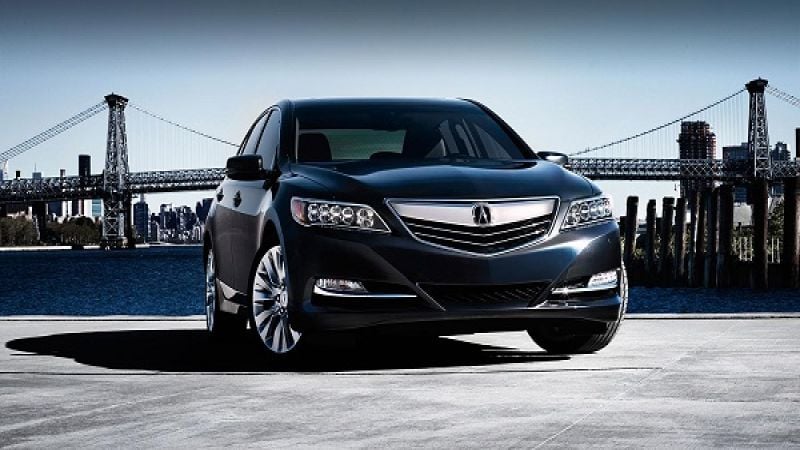




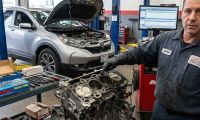
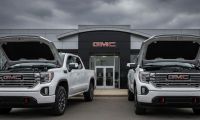
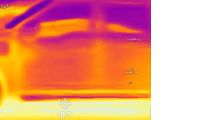
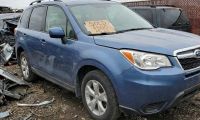
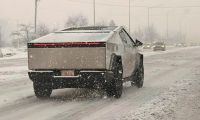
Comments
Good day Parks, "Autonomous"
Permalink
Good day Parks, "Autonomous" technology apparently is the wave of the future, but I am not entirely comfortable with it either. Example, I owned a Ford Contour, (One of the worst cars ever produced), and was coming up my rather steep driveway in the winter. With the traction control working, no problem, but one time, halfway up, the traction control crapped out and turned off, I was just plain lucky, I was able to avoid the brick wall on either side of my driveway as I slipped back all the way down the hill. Point being, lose a sensor, have a computer glitch, have a sticky brake any number of things that may happen which may effect the system and one may find themselves in trouble. By then, turning off the system is probably too late if the driver even has the time, or the presence of mind to do so. The, "concept" is sound, the execution, programming and hardware has a ways to go. By the same token, as with all new Tech., you have to start somewhere and there is going to be a learning curve. 20 years from now one will probably be able to punch in a destination, sit back and let the car get you there. "Accident mitigation" yes. Full out "autonomous" driving, could change the, "Culture" entirely and that could be a good thing or bad, depending on one's point of view and where, "autonomous" driving ends up taking us. Personally, I rather keep my hands on the wheel. Be well, All Best.
Good morning JeffS...What I
Permalink
Good morning JeffS...What I learned at autonomous grid connectivity events in Los Angeles and Detroit is that these systems will soon be integrated into remote controlled highway and freeway traffic pattern grids. "Lane Keep" and radar, camera sensing (set-distance) following cruse control will work in tandem with the vehicle to the front, rear and to the sides of your car to form somewhat of a "traffic train." The hope here is that these systems will (near-term) smooth the rush hour(joke) traffic flow of high population urbane zones while eventually eliminating (most) injury and fatality automobile accidents. That, I like. In the mean-time, like you--I too keep my hands on the wheel and eye on the road. Happy Saturday to you.
Hope you are enjoying your
Permalink
In reply to Good morning JeffS...What I by Parks McCants
Hope you are enjoying your weekend as well. Let me premise my next comment by first stating that I feel absolutely blessed to live in this country. That being said, we seem to be moving towards a, "Big brother" society, that's a good and a bad thing. I see, "autonomous" driving becoming a step in that direction. It's not all that far fetched that through GPS and the tech that you mention our cars will be regulated to the speed limits posted. Yes, by law we should all be driving at the speed limit anyway, but in reality, an overwhelming majority, myself certainly included, tend to push the boundaries from time to time. In essence, what I am suggesting, is that the days of feeling your oats on the back roads may soon be a thing of the past. That could change our, "Car culture" completely. I'm old enough that if/when it would come to that, for me it be a good idea, but are we sure as a society we want it to come to that. I know the idea seems far fetched, stranger things have happened and it is well within the realm of possibilities. From what I understand, here in Jersey anyway, the GPS information collected from the EZ pass units could be, (not, may be) used to issue a citation if it shows you exceeded the speed limit between tolls. There is allot of discussion if it should be allowed. However your EZ pass may be revoked if it shows one speeding. All I am pointing out is the notion about a, "Big brother" in your passenger seat is not really all that inconceivable.
I'm with you JeffS and will
Permalink
In reply to Hope you are enjoying your by JeffS (not verified)
I'm with you JeffS and will hold my political diatribe for a later date. Still recovering from my Obama administration reporting days with MSNBC. And B.T.W, will turn my cellphone and GPS off while driving. I too am old school. Take care.
My Mom used to tell me, do
Permalink
In reply to I'm with you JeffS and will by Parks McCants
My Mom used to tell me, do not discuss religion or politics unless you are prepared to open up a can of worms. Reporting for MSNBC on such, I'm sure you have enough, "worms to start a worm farm". Talk about going from nothing but aggravation, (reporting on, "Politics") to the Dream job of reporting on the Auto industry, (I'm sure it has it's share of aggravation as well, but I imagine nothing like politics), I'm sure you are more than happy with the change of venue. The politics of this day and age seems like 2 runaway trains heading straight for each other. I do not see any good choices, just a choice between the lesser of the 2 evils. We have a lotta work to do to right the, "Political Train", and I will say no more on the subject. Be Well Fella.
Good morning JeffS. Always
Permalink
In reply to My Mom used to tell me, do by JeffS (not verified)
Good morning JeffS. Always happy to toss the ol' political debate ball around a bit. But right you are my friend. The definitive party lines are (often) very blurry on the Hill. I like your train wreck analogy, spot on!
Parks, since you cracked the
Permalink
In reply to Good morning JeffS. Always by Parks McCants
Parks, since you cracked the door open, might I suggest that Torque pen an article on our failing infrastructure. It's ludicrous what we spend some of this country's money on while our roadways are crumbling beneath our feet. As a country we have already virtually IGNORED this problem for far too long.
On many of the highly traveled roads here in Jersey one almost needs a rugged SUV to navigate them
without the chance of bugering up a tire or wheel or alignment or worse. In my area the road department makes the rounds on a regular basis, putting temporary bandages on potholes and alike, while the road gets worse and worse and worse, and the, "fixes" last shorter and shorter amounts of time. It's happening all over the country and sooner or later we are going to end up having to pay the piper. The longer we wait, the bigger the bill is going to be and I'm not just talking in terms of $ & cents.
Another example of, "Politics" being, "Asleep at the wheel". Later Parks, have a good day
Can someone tell me if the
Permalink
Can someone tell me if the GPS system on the Acura RDX 2016 has traffic information on the toll roads? My 2013 RDX does not.